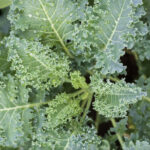 Of all the world’s wine regions, Bordeaux may be the most intriguing—and perhaps the most confusing.
Of all the world’s wine regions, Bordeaux may be the most intriguing—and perhaps the most confusing.
Located in southwest France where the Rivers Dordogne and Garonne come together, Bordeaux is divided into the right bank and left bank. Each has its own definition of what makes a typical Bordeaux blend.
All red wine from this region is blended from six grapes allowed under law. They include the two noble grapes of cabernet sauvignon and merlot, as well as the minor fruit of cabernet Franc, malbec, petit verdot and carménère.
Typically, the left bank wines are blended with 70 percent cabernet sauvignon, 15 percent cabernet Franc and 15 percent merlot. Those on the right bank are 70 percent merlot, 15 percent cabernet Franc and 15 percent merlot. The other grapes are used to help maintain the personality and style of each chateaux and are blended in very small amounts.
This most famous of Gallic regions has shipped wine to the British Isles under the name of “claret” since Henry II married Eleanor of Aquitaine and introduced high-quality red wine to English palates.
Bordeaux wine has always had a following among oenophiles all over the world. Its greatest decade was arguably from 1981 to 1990, with eight amazing vintages in terms of quality and quantity. To maintain such high standards as costs for producing these legendary quaffs have increased, the chateaux have turned to offering wine futures.
Anyone with more than a passing interest in the stock market may be familiar with the concept. In France, the wines are offered at a price that is usually lower than when they are released for sale to the general public. Futures pricing can be complex, as ratings are assigned to the vintage, to each of the 54 appellations and to individual chateaux. Professional wine critics taste barrel samples for first impressions and then later when the wines are bottled. The results and personal reactions are printed in magazines, newspapers and blogs.
I’m writing about this topic this month because Fine Wine and Good Spirits now offers Bordeaux futures for the wine-lovers (and speculators) of Pennsylvania. There’s a list of the 2017 and 2018 vintages at www.finewineandgoodspirits.com with prices, code numbers and bottle sizes. Read over the terms and conditions carefully. To find the ratings, check with wine publications, websites and blogs by people dedicated to giving their opinions in a zero to 100-point format. In addition, Decanter, a British magazine, has excellent articles and contributors.
Some people think that there is money to be made in wine purchases for reselling at a profit, which takes many years and much patience. For the average wine-drinker, however, my advice is to buy for your own pleasure and drink up as it matures.
Keep sipping,
Steve





